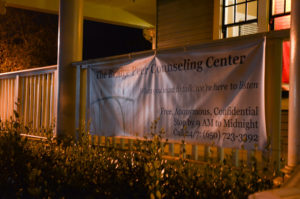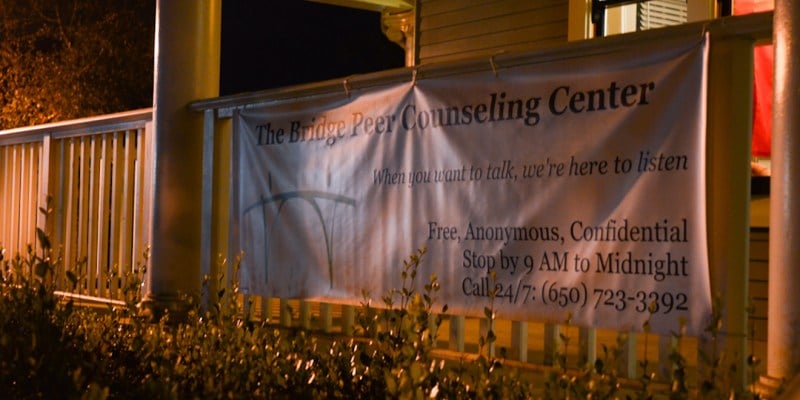
This article is the third in a mini-series examining Counseling and Psychological Services (CAPS) and how it has responded to increased community scrutiny.
Flyers for The Bridge Peer Counseling and the Confidential Support Team hotline plaster bulletins all across campus. With the multitude of mental health resources available to students, it can be difficult to keep track of where each resource fits into the ecosystem of mental health support at Stanford.
The Daily sat down with representatives from several mental health groups on campus to examine how each interacts with Stanford Counseling and Psychological Services (CAPS) and their efforts to help students in need.
Resource allocation
CAPS, located on the second floor of Vaden Health Center, is the University’s primary counseling center. CAPS is staffed by psychologists and social workers, and has separate funding from other mental health resources on campus.
According to Vaden Director James Jacobs, the existence of other resources, such as the Confidential Support Team (CST) and the athletic department’s mental health staff for student-athletes, has a net positive impact on CAPS because it lessens the number of students competing for space at CAPS.
“In a way, resources have grown,” Jacobs said. “It’s just not CAPS resources, per se.”
The Confidential Support Team is a relatively new campus resource created in December 2014. Vaden leaders, alongside recommendations from the Sexual Assault Task Force, developed the service to be separate and insulated to ensure confidentiality and to address the wide range of needs of students who have experienced trauma from sexual assault or relationship violence, including needs that may not necessarily be related to mental health.
CST’s confidentiality sets it apart from other sexual assault resources like the Sexual Assault and Relationship Abuse (SARA) and TItle IX offices. In contrast to the SARA office, CST also offers clinical services and situates itself, according to director Helen Wilson, as a first stop for students seeking healing after a traumatic experience.
According to Wilson, about one quarter of students that have suffered traumatic events use the service only once. However, in addition to confidential consultation and informational support, CST also offers more long-term counseling and emotional support.
“[The ultimate goal is] that we wouldn’t need an office like CST, but I think that is, unfortunately, unrealistic in the near future,” Wilson said. “Provost [Persis] Drell has stated that sexual assault is one of her top issues to address, so I see us continuing to have a lot of support and resources from the University.”
Wilson went on to express that while Stanford is at the forefront of providing mental health resources to students — most college campuses do not even have an office like CST, she said — these resources are still limited in their capacity to reach the broader community.
Meanwhile, counselors at The Bridge Peer Counseling Center — which shares a building with CST — expressed the same concerns about limited mental health resources.
The Bridge is a 24/7 counseling service that is run by trained undergraduate and graduate students. Members of the Stanford community may call The Bridge hotline at any time, or drop in to Roger’s House to receive free counseling.
Rebecca Bromley-Dulfano, a counselor and university relations coordinator at The Bridge, reiterated that CAPS operates at full capacity. According to Bromley-Dulfano, The Bridge works in conjunction with CAPS and constitutes a multi-functional resource that is best for short-term care.
Bromley-Dulfano described the experience of coordinating with the SARA, Resident Dean (RD) and CAPS offices as encouraging.
“Like many people, I have frustrations with the mental health support systems at Stanford,” Bromley-Dulfano said. “But being able to talk with administrators who are working there and who are trying really hard to make sure that students get the support that they need was just overwhelmingly heartening.”
Bromley-Dulfano believes that while The Bridge and CST work to alleviate pressure on CAPS, there are still significant changes that need to be made, such as an increase in and diversification of CAPS counselors.
While the variety of mental health resources available to students cultivates a diverse and visible network of support on campus, Bromley-Dulfano pointed out that the complexity of the system can make it confusing and inaccessible to some students. To combat this, she is collaborating with CAPS to create informational videos explaining the resources available to students, which will launch on the website in coming months.
Questions of resource parity
One student-athlete, who wished to remain anonymous, spoke to The Daily about the differences between her experiences with both CAPS and Stanford Psychiatry, which is the counseling resource used by the athletic department. This student expressed dissatisfaction with the way she felt constantly shuffled around at CAPS, and claimed that the counselors she saw there were not equipped to handle the severity of her depression.
After her coaches noticed a dip in her performance at the end of her freshman year, she was referred by the sports psychiatrist to Stanford Psychiatry. Here, the student made a full recovery and was fully satisfied with the care she received.
“[As a student-athlete] I have access to facilities that are excellent and that are enough for me, but other people don’t have access to those,” said the anonymous student, adding that she believes it is difficult for non-student athletes to get into Stanford Psychiatry.
The student-athlete also claimed that she found the professionals at Stanford Psychiatry to be more experienced and that they had a wider variety of resources at their disposal, like surveys and electronic materials. She also noted that she was able to see the same therapist consistently at Stanford Psychiatry, whereas at CAPS, her appointments were with different counselors and were more spread out.
However, CAPS Director Ron Albucher said that while athletes may utilize a more complicated system, it is not inherently better. The athletic department, he explained, has several longstanding contracts with certain departments at the medical center, including the mental health department.
Because of this, athletes have both the option of contacting Director of Sports Medicine in psychiatry Lisa Post to get into Stanford Psychiatry or reaching out to CAPS. In an email to The Daily, Post wrote that the services “do our best to set appointments promptly.”
Still, Albucher attested that these differences do not affect wait times or value of care, as students are just as likely to see a psychiatrist at CAPS as they are at Stanford Psychiatry.
“It’s not a two-tiered system where athletes are getting in really fast and getting care,” Albucher said.
Albucher also noted that psychologists at CAPS are employed under the University, whereas psychologists at Stanford Psychiatry are faculty at the department of psychiatry in the medical school. He explained that department employees get better salaries and benefits than employees who work for CAPS, a problem that evolved gradually and become increasingly problematic as CAPS went from offering mostly psychological services to offering more psychiatric services.
Albucher said that while this complex system is based on history and a natural development of services, it no longer makes much sense in the status quo.
“We’re trying to address this, but we’re working in a student affairs model,” Albucher said. “It’s not a medical center model, and so the budgets are different and the incentives are different. It’s a very slow process. We’ve been working for years trying to get it closer. I’m hopeful we’re getting nearer to that point.”
Ongoing initiatives
As ASSU’s Mental Health and Wellbeing executives this past year, Emma Coleman ’17 and Hope Yi ’17, worked to revamp Stanford’s health and wellness website in order to clarify the resources available to students. Additionally, they have worked with CAPS administrators to create promotional videos that “demystify admittance procedures.”
In an email to The Daily, they expressed that the goal of the website is to help students more easily find the resources that they need.
“A lot of mental health and wellbeing services are spread by word of mouth, or knowledge that is embedded in certain in-groups– which is great to see, since it means that the community that we surround ourselves with can help us meet our needs,” Coleman wrote. “But resources also need to be accessible to edge cases… We want everyone to feel as if they are not alone, and have someone to turn to in times of need.”
Coleman and Yi remain optimistic about the improvement of mental health resources on campus, but hope to see increased inclusivity in future wellness initiatives.
Contact Ellie Bowen at ebowen ‘at’ Stanford.edu.
Correction: An earlier version of this article incorrectly stated that the Confidential Support Team is an auxiliary service of CAPS developed by CAPS leaders. In fact, he CST was developed by Vaden leaders and considers it entirely separate from CAPS.
